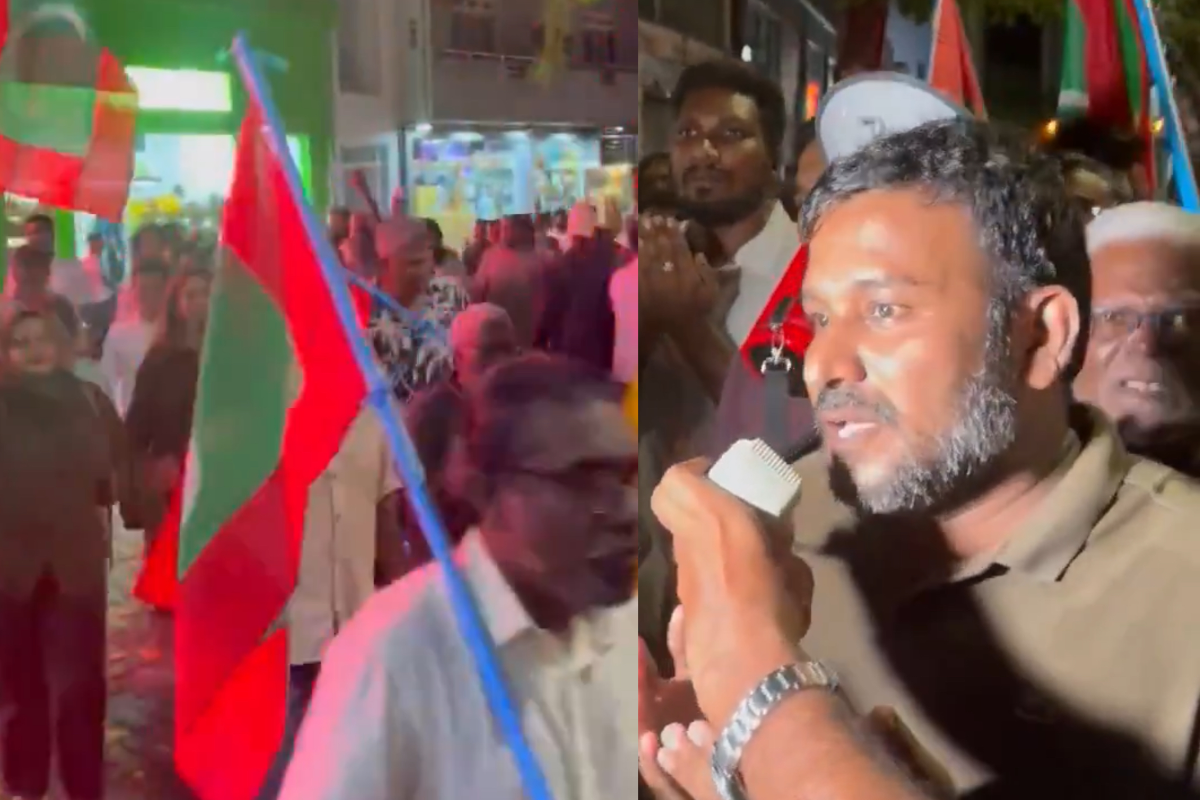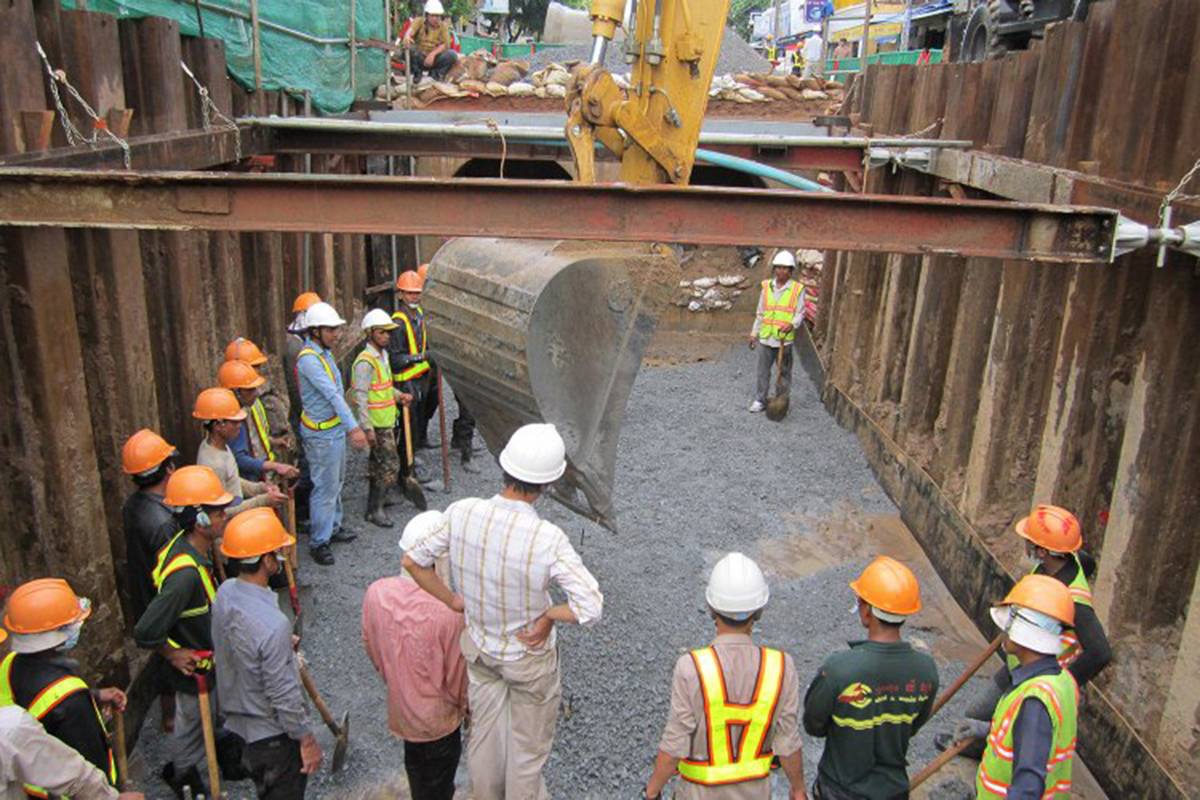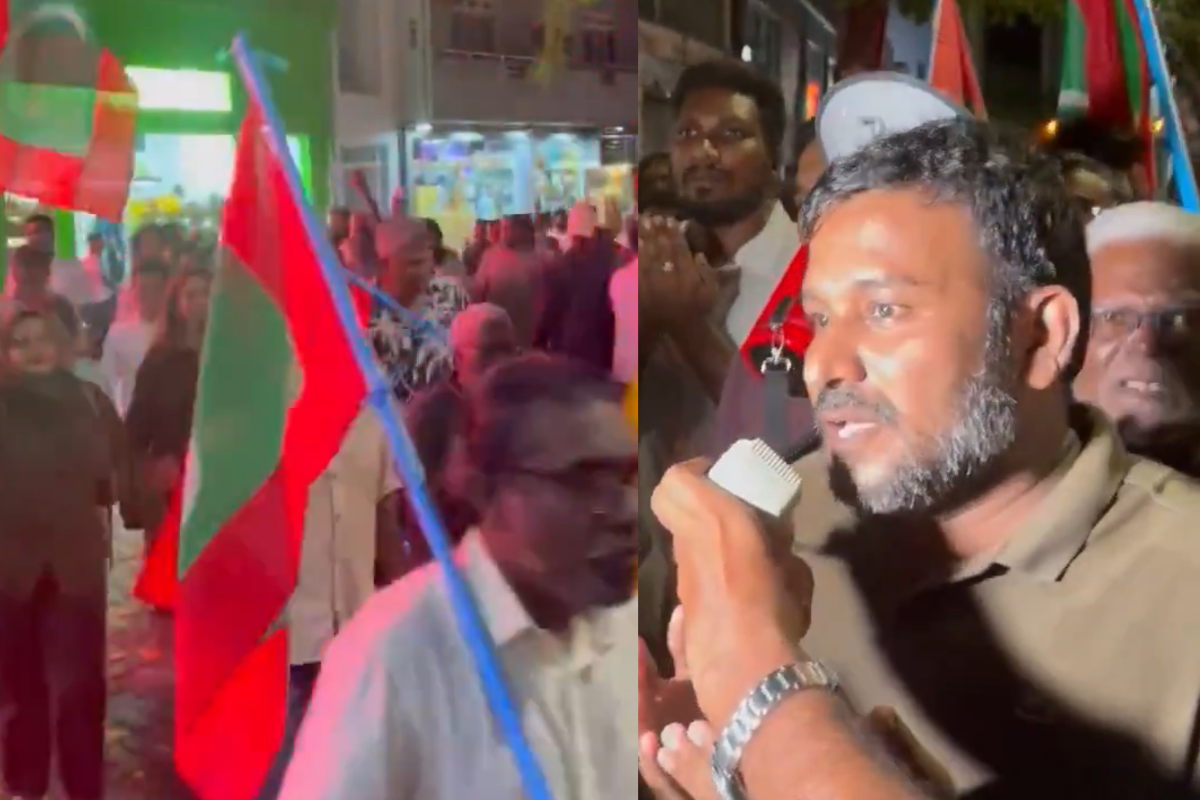Thousands of Maldivians took to the streets of the capital, Malé, on the night of March 7, 2025, in a powerful demonstration against the government, rallying under the banners of “Defend Supreme Court” and “Defend Democracy in Maldives.” The protest, which began in the evening and extended into the early hours, marked a significant escalation in the ongoing political tensions gripping the Indian Ocean archipelago.
The demonstrators, primarily supporters of the opposition Maldivian Democratic Party (MDP), gathered to voice their outrage over what they perceive as government overreach and attempts to undermine the judiciary, particularly the Supreme Court. The protest was sparked by recent actions that critics claim threaten the independence of the nation’s highest court, though specific details of the triggering event remained fluid as the situation unfolded. Chants of resistance echoed through Malé’s narrow streets as protesters demanded accountability and the preservation of democratic institutions.
Eyewitnesses reported a charged atmosphere, with participants waving flags and holding signs condemning the administration. A prominent figure in the MDP delivered a fiery speech, captured in posts circulating on X, urging citizens to stand united against what was described as an assault on the rule of law. “This is not just about the Supreme Court; it’s about our democracy, our future,” the speaker declared to a roaring crowd, according to sentiments shared on social media platforms.
The Maldives has a history of political turbulence, with protests often serving as a barometer of public discontent. The March 7 demonstration drew parallels to past movements, such as the 2015 May Day protests, which saw thousands rally against the imprisonment of former President Mohamed Nasheed. On this night, the turnout suggested a broad coalition of citizens, including opposition supporters and those disillusioned with the current government’s policies.
Authorities deployed security forces to maintain order, with reports indicating a heavy police presence around key protest sites. While the night remained largely peaceful as of 2:26 AM, tensions lingered, with some onlookers expressing concern over the potential for clashes. The government has yet to issue an official statement responding to the protest, leaving observers awaiting its next move.
Social media buzzed with real-time updates, with posts on X highlighting the scale of the unrest. Hashtags like #DefendSupremeCourt and #DefendDemocracyinMaldives trended locally, amplifying the protesters’ message beyond the shores of the Maldives. Images and videos showed a sea of people marching under the night sky, their resolve illuminated by streetlights and phone screens.
The protest comes at a time when the Maldives faces mounting challenges, both domestically and internationally. Political analysts suggest that this demonstration could signal a broader wave of opposition to the government, which has faced criticism over governance, economic management, and foreign policy decisions in recent years. The Supreme Court, a cornerstone of the nation’s legal framework, has often been a flashpoint in such disputes, making its defense a rallying cry for those seeking to protect democratic norms.
As the sun rises over Malé on March 8, the implications of the night’s events remain unclear. Will this protest mark a turning point in the Maldives’ political landscape, or will it be another chapter in its long history of unrest? For now, the voices of the Maldivian people have resounded loudly, demanding to be heard in the fight for their judiciary and their democracy.



